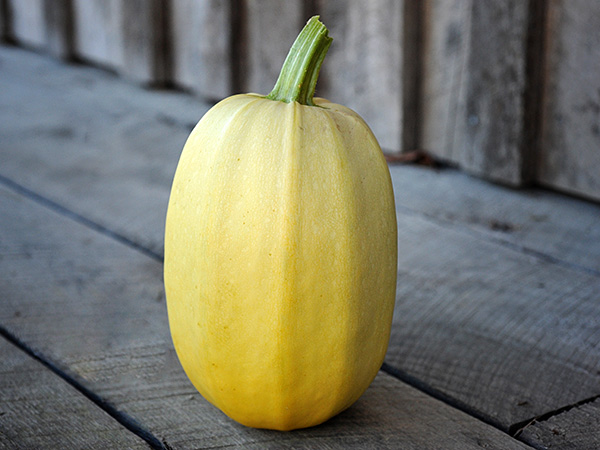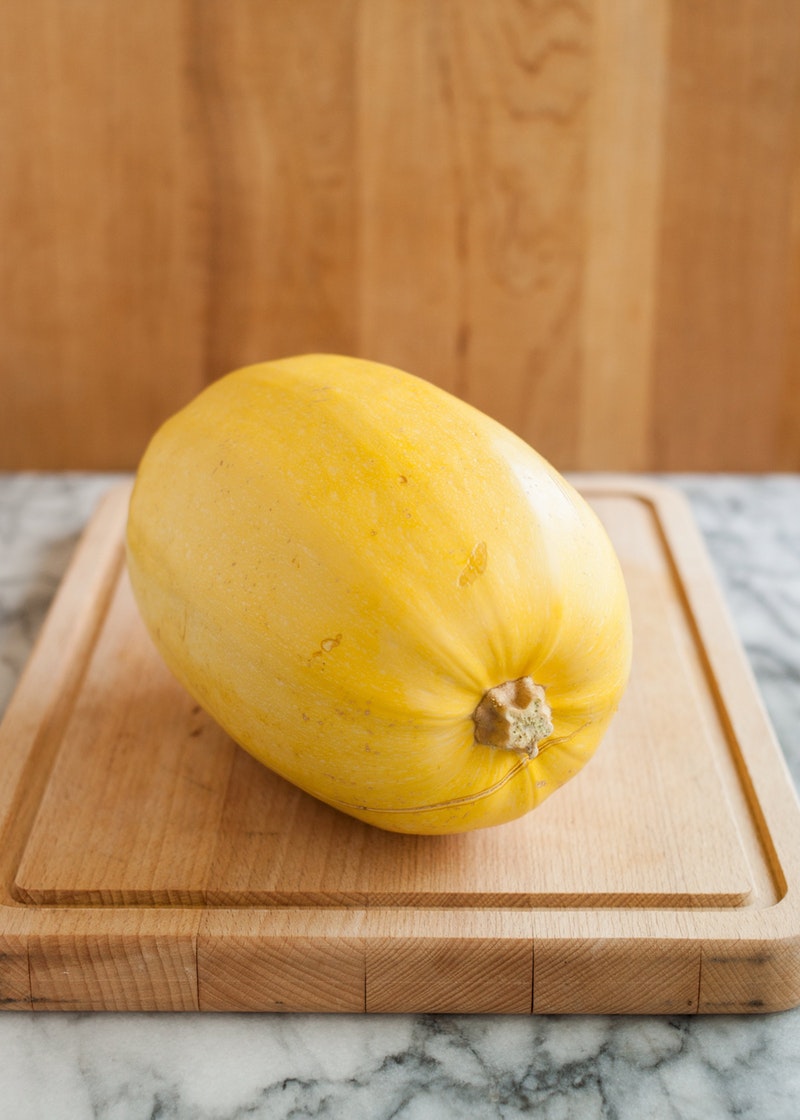|
|
Gelber Zentner from Germany meaning Yellow Giant, also known as Gele Reuzen or yellow giant in Dutch. The color of the skin can vary greatly in shades of red, orange, green and yellow. Fruit can weigh up to 12 kg. Skin cracks as it matures. Very tasty flesh. Some time ago the best known variety in Central Europe, even though the flesh is of minor quality. This variety was often used together with Rouge vif d Etampes as pig feed.
|
|
Variety of squash very close to the variety "Pumpkin of Touraine" but with smaller fruits. Large cylindrical green fruits with white stripes. Flesh color cream, very fibrous but interesting for farm animals (vermifuge). Can be kept more than 6 months. Growth: 100 days.
Native of the Bressane region in France.
|
|
Also known as Jaune Gros de Paris, or Big Yellow Pumpkin of Paris. The beautiful giant pumpkin of historic Paris. The big pinkish-yellow fruit can grow to over 100 lbs. They are round, flattened, and have light ribbing. They are good keepers and are still popular in France. Good in pies, soups, and baked. The yellowish pink skin cracks when ripe, and the flesh is dark yellow.
Also known as romaine jaune, romaine or Roman squash.
Varieties:
Nicaise Squash
fruit: Round, flattened, broad ribs, red-orange skin.
fruit size: 25 to 30 cm in diameter. Height 13 to 17 cm.
weight: 5 to 7 kg.
|
|
Pacheco is an old, local variety from the northern plains of Chihuahua, Old Mexico. The fruit is round and a little elongated with light ribbing and rind that starts out olive green colour and matures to yellow when ripe. Inside, the yellow flesh is medium firm, moist with a mellow sweetness. The medium length, thin vines produced fruit ranging from1.5kg to 2.5kg in around 90 days.
Varieties:
Marina Basso
Local variety of pumpkin coming from the area of Venice, Italy where traditionally it was cultivated in association with the corn, between one row and another, to optimize the two crops, according to a principle that today characterizes biodynamic agriculture.
Romena Pumpkin
Pumpkin originating in Romania, coming from the countryside around Bucharest;
used for food purposes.
|
|
|
|

Also known as Soumen Kabocha (noodle squash) and Kinshi, or Kinshuri (yellow golden squash).
This Japanese strain of this incredible squash introduced by Sakata Seed Company of Yokohama, Japan. It produces wheat-free, low-carb noodles in abundance on productive vines. According to some sources, Sakata Seed Co. in Japan developed an improved strain of a Chinese spaghetti type squash. It is said that Burpee picked up this seed and began selling it as Vegetable Spaghetti in 1936. In Japan, spaghetti squash is most commonly called ‘Somen Kabocha’ or ‘Kinshi Uri.’ Somen means skinny noodles and Kinshi means golden thread, and it is very popular to eat the ‘noodles’ cold during the hot summer. The book Sosai Engei Zuhen (1951 by Jyouji Togashi & Suteki Shinohara) states that the spaghetti squash originated in China, some say in the 19th century. Sakata Seed Co. was founded in Yokohama in 1913, and there are records showing they were importing spaghetti squash to N. America prior to 1921. Much of the paperwork before the war was lost in the Yokohama great air raid, and there are no documents remaining to definitively answer where their squash originated. What we do know is that the Japanese have been growing this squash for over a hundred years, and people on both sides of the world have been enjoying it for at least that long. 85 days.
|

This is American strain of this popular Japanese squash, with stringy flesh that is used like spaghetti. Introduced to America before 1920. May have originated in Manchuria (China).
85 days.
Seed Reviews
Grows well in NS Canada, California, Washigton, Ireland, Texas
Varieties:
Angel Hair Personal Sized Spaghetti
This is a personal size Spaghetti Squash weighing only 1-1/2 to 2 pounds and making only 1-2 servings. It is sweet and flavorful. The fruit are egg shaped with a sunshine yellow color when ripe.
Makaronowa Warszawska
New spaghetti squash from Poland. Plants are of a bush habit, and have lots of disease resistance. Pale-yellow fruits are the usual elongated oval shape, reach 2-3 pounds each. Flesh is fine-grained and tasty.
Small Wonder Hybrid
A newer spaghetti squash with great flavor and a perfect size to eat and work with. This yellow, ostrich egg-shaped squash is great for a backyard and is highly decorative with its smooth yellow skin. 90 days
Orangetti
This orange, watermelon-shaped squash is a variety of the spaghetti squash. Like its cousin, it was named because the flesh separates into spaghetti-like strands when cooked. Orangetti Squash has a multitude of uses.
Unlike summer squash (which is picked when immature and skin is tender), Orangetti Squash has a hard, thick skin and only the flesh is eaten.
To cook Orangetti Squash, bake or boil whole until soft, then cut lengthwise and remove strands with a fork. It is wonderful topped with sauce and served like pasta, as part of a casserole or even cold as a salad ingredient. Orangetti Squash is an absolute way to add variety and excitement in any meal.
Choose squash that has a hard, deep-colored rind free of blemishes or moldy spots. Tender skin indicates immaturity or poor quality. The hard skin protects the flesh and allows it to store longer than summer squash.
Store Orangetti Squash in a cool, preferably dark, well-ventilated area for up to three months. Wrap cut pieces in plastic and refrigerate up to five days.
|
|
A Striped Vegetable Spaghetti with better flavor! A cross between spaghetti squash and delicata, the threads in this squash are softer and more mild, with more corn-like flavor than the usual spaghetti variety. The skin color of Stripetti F1 changes to indicate ripeness. Fruit are very hard, giving long shelf life and good shipping. Good keeper. Cook whole in boiling water for 30 minutes or microwave. Good with pasta sauce.
Varieties:
Squisito
With both spaghetti squash and delicata ancestry, these squash are stringy but with sweeter, more rich flavour than the standard spaghetti. Some fruit have stripes, others don't… it's the delicata coming out! When ripe these are deep-gold some with yellow and others look like regular Spaghetti squash.
|
|
|
 MBZ
MBZ
